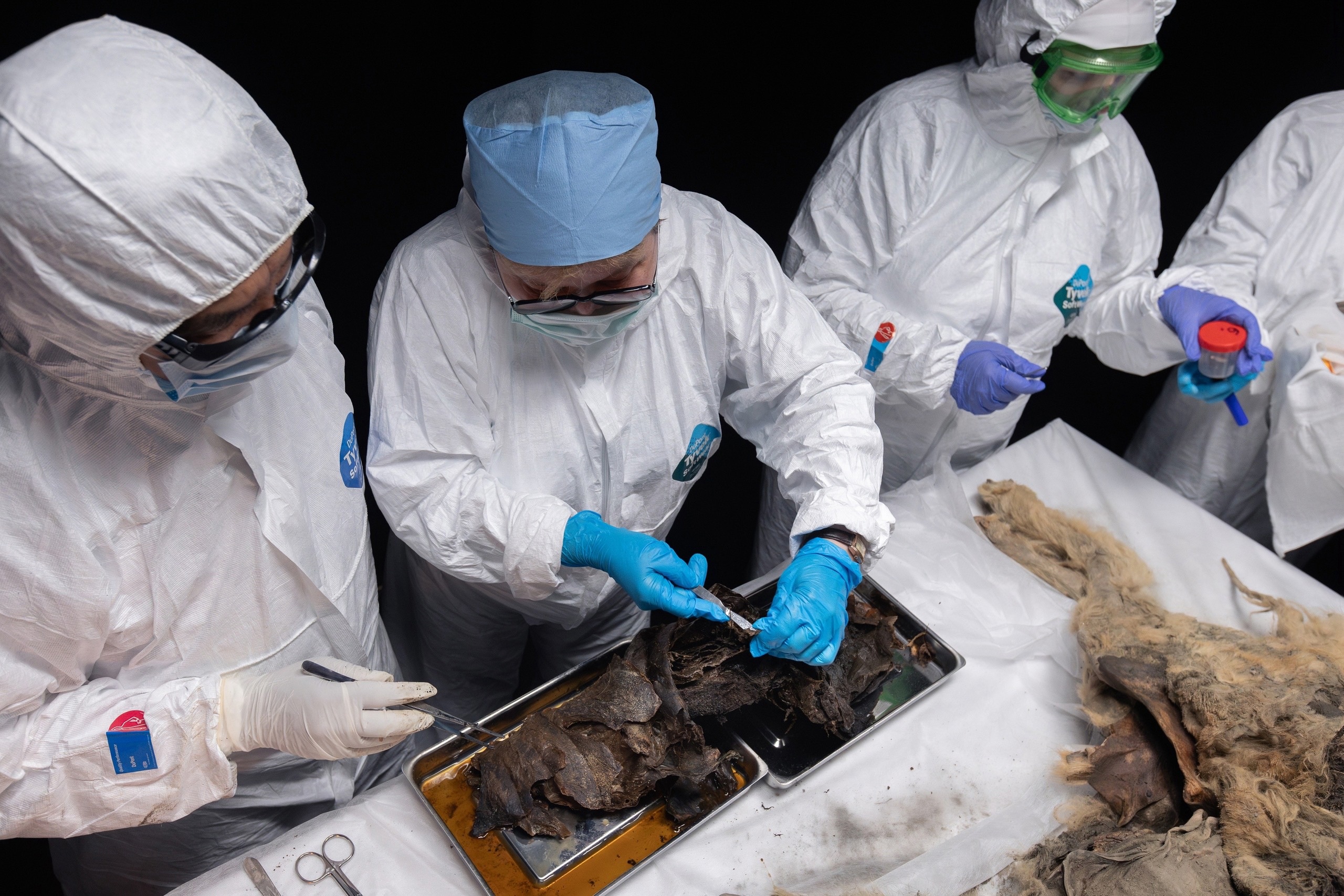A prehistoric wolf that’s been frozen like a popsicle for over 44,000 years has undergone a post-mortem in Russia, set to reveal all kinds of insights into its life as an apex predator in the Ice Age.
The wolf was discovered in 2021 beneath around 40 meters (131 feet) of permafrost on the Tirekhtyakh River in the Abyysky District of Russia’s Far East.
Its body was transferred to the Academy of Sciences of the Republic of Sakha (Yakutia) and has since undergone an autopsy by scientists at the Mammoth Museum of the North-Eastern Federal University and the European University at Saint Petersburg.
Under sterile conditions, the team cut open the carcass and took samples of its internal organs, as well as the contents of the gastrointestinal tract. By looking at the bacteria in its guts, it could be possible to learn about the wolf’s diet and health.
“His stomach has been preserved in an isolated form, there are no contaminants, so the task is not trivial. As a result of the preparation, we hope to obtain a snapshot of the biota of the ancient Pleistocene. It was an active and large predator, we have the opportunity to find out what it ate. In addition, the objects that his victims consumed also ended up in his stomach,” Albert Protopopov, head of the department for the study of mammoth fauna of the Academy of Sciences of Yakutia, said in a statement.
The inner organs of the wolf specimen are remarkably well-preserved – which is good news for the researchers.
Image credit: North-Eastern Federal University
“In addition, we selected one premolar tooth in order to determine the biological age of the find. Judging by the wear of the teeth and the development of the sagittal ridge, we can say that this is an adult male,” added Maxim Cheprasov, head of the laboratory at the North-Eastern Federal University Mammoth Museum.
The researchers hope that some of the microorganisms that inhabit the animal’s insides might even still be living, suspended in a hibernation-like state for thousands upon thousands of years under sub-zero temperatures. If they have survived, there’s a chance they could even be used to inform modern-day biomedicine.
“Our scientific cooperation with the NEFU Mammoth Museum has allowed us to learn more about the bacteria that inhabited the mammoth steppe, starting from the Pleistocene period. We see that living bacteria can survive in fossil animal finds for thousands of years, which are a kind of witnesses of those ancient times,” noted Artemy Goncharov, a professor in the Department of Epidemiology, Parasitology, and Disinfection at North-Western State Medical University.
The guts of the frozen wolf may contain bacteria that have survived since the Ice Age.
Image credit: North-Eastern Federal University
“We hope for good results that will allow us to advance a little further in understanding what ancient microbial communities were, what function they performed, and to what extent dangerous pathogenic bacteria were represented in their structure. Perhaps, microorganisms will be discovered that can be used in medicine and biotechnology as promising producers of biologically active substances,” Goncharov added.
This isn’t the only exciting specimen held by the North-Eastern Federal University; they also recently acquired another frozen wolf found in the Nizhnekolymsk region of Yakutia, Siberia, and plan to begin studying it after wrapping up research on the current carcass.
This part of the world is abundant in permafrost, a permanently frozen layer of soil under the Earth’s top surface, which acts as an ideal material to hold and preserve living specimens from the Ice Age. A diverse menagerie of ancient animals have been discovered in this desperately cold patch of Siberia in recent times, including a 49,000-year-old bird and a beautifully preserved puppy named “Dogor”.
Source Link: A 44,000-Year-Old Wolf Frozen In Permafrost May Still Contain Living Bacteria
